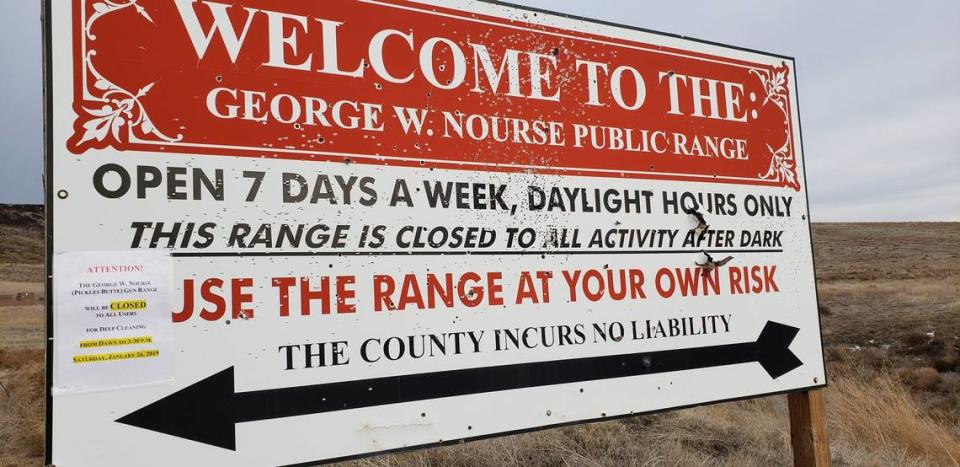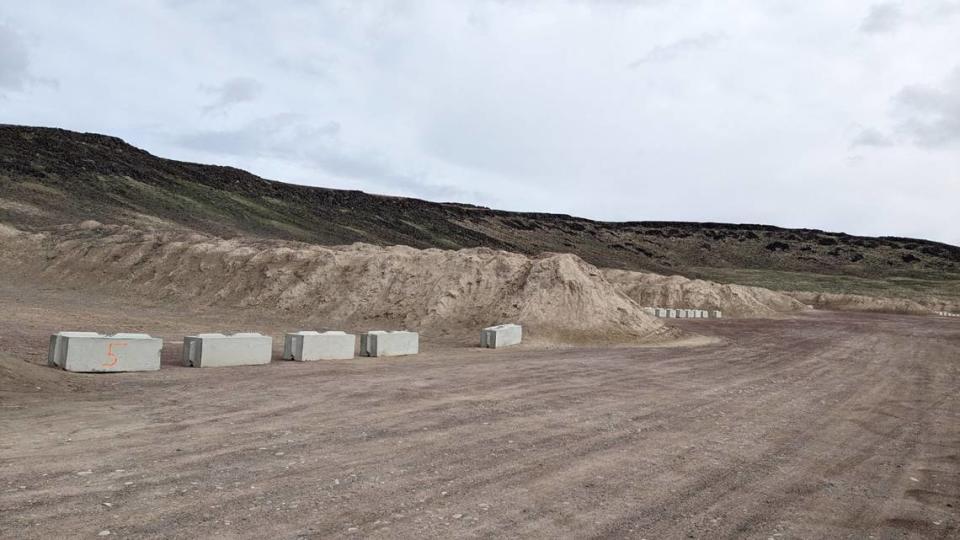Man was accidentally shot, killed at Idaho gun range. Could improvements make it safer? | Opinion
Plans are in the works to improve the George W. Nourse Public Shooting Range, where a young man was accidentally shot and killed July 5.
According to the Canyon County Sheriff’s Office, a 26-year-old was accidentally shot in the abdomen by another man whose rifle went off when he was unloading the rifle at the range, south of Nampa.
Clearly, the man who accidentally shot the other man was violating some basic rules of gun safety: Always assume your gun is loaded, keep the gun pointed in a safe direction at all times and keep your finger off the trigger until you’re ready to fire your weapon.
But could planned improvements at the range help to prevent such accidents from happening in the future?
In May, Canyon County Parks Director Nicki Schwend told Canyon County commissioners that the gun range is in need of physical, safety and “behavioral” improvements, according to the minutes of the May meeting.
She told the commissioners that she feels that the best way to improve users’ behavior is to improve the facility and show that expectations are changing, according to the minutes.
Commissioners issued a request for qualifications for architecture and engineering services for a four-year construction project to improve the range and provide a separate training facility for the Canyon County Sheriff’s Office.
Construction would be a joint effort among the county’s facilities and parks departments, and the Sheriff’s Office.
Facilities Director Rick Britton told commissioners the project would improve the safety standards and cleanliness at the range, which is popular with residents. It’s free to use and it’s open during daylight hours every day of the year, but it has limited amenities.
Shooting lanes are not well-defined, and there are no benches to load and unload weapons, which may have been a factor in the accidental shooting death. There are only concrete Jersey barriers to mark the firing line.
And it’s unstaffed, so there’s no range master or safety officer making sure rules are followed or shutting down the range for safety reasons.

Black’s Creek Public Shooting Range
It’s a stark contrast with another popular local shooting range, Black’s Creek Public Shooting Range in Kuna, which is owned by the Idaho Department of Fish & Game but run by the EE-DA-HOW Rifle & Pistol Club, a mutually beneficial arrangement that dates back to 1979, when the state Legislature mandated hunter education classes for young people.
Black’s Creek has 40 covered shooting benches, and the main range accommodates shooting distances to 200 yards.
Shooters get a target, and Black’s Creek provides target stands, bench rests and sandbags.
But it’s not free.
It costs $10 for a session, but you can shoot as long as you like and bring as many guns as you want to fire.
“We have people come here from other parts of the country and they can’t believe we only charge $10,” Kenny Durham, president of the EE-DA-HOW club, told me in a phone interview.
EE-DA-HOW staffs Black’s Creek with three paid employees, who work when the range is open, generally morning to evening, Thursday through Sunday in nice weather, Friday through Sunday in the winter. Money to pay the range officers comes from the fees charged to shooters.
Durham said the range gets 13,000 to 15,000 visits per year.
Club members, who are required to volunteer 10 hours per year, also volunteer at the range.

Gun range improvement plans
Plans for the George Nourse range include improvements to side and back berms, improved lane lengths and widths, reinforced lane boundaries with walls, separate handgun and rifle lanes, vault toilets and covered shooting benches, according to the county’s request for qualifications.
In addition, plans call for a new law enforcement training center and range that meets Idaho Peace Officer Standards and Training requirements. One full-time deputy would be staffed at the center.
But there are no plans to staff the public shooting range.
That likely would keep it free, and the improvements would help with safety.
“You don’t necessarily have to have staffing to have a nice shooting range,” Durham said. “You just have to make it a safe shooting range.”
He said the range in Garden Valley, for example, is not staffed but is safe. When shooters want to go down to collect their targets, they let others know, and everyone stops shooting, and the range is “cold,” meaning it’s safe to check, move or retrieve your target.
Because Black’s Creek is staffed, the rules are more formal — and more formally enforced by the range officer.
I remember one time, when the range was cold, I stepped over the yellow line and looked through the spotting scope that was on one of the benches.
“Sir! Sir!” came the shout from the range officer.
It’s a no-no to touch anything in front of the yellow line when the range is cold. (I don’t feel too bad; Durham said he’s done the same thing.)
Certainly, had a range officer seen someone unloading his gun and pointing it at the gut of the guy standing next to him, he would have hollered at him.
I have no doubt that having staffing at the George Nourse range would improve safety and might have prevented the accidental shooting death that happened last week.
But I also understand the desire to keep the range free of charge.
If the George Nourse range were to start charging a fee, some folks might just go out into the desert to shoot, which tends to result in littering and even wildfires and certainly does nothing to improve safety.
So on balance, it might be better to keep the George Nourse range unstaffed and free, but only if Canyon County gets these improvements done. Covered benches, more defined lanes and improved berms — along with a more formal shooting environment — should improve safety.
And hopefully prevent another tragic death.


